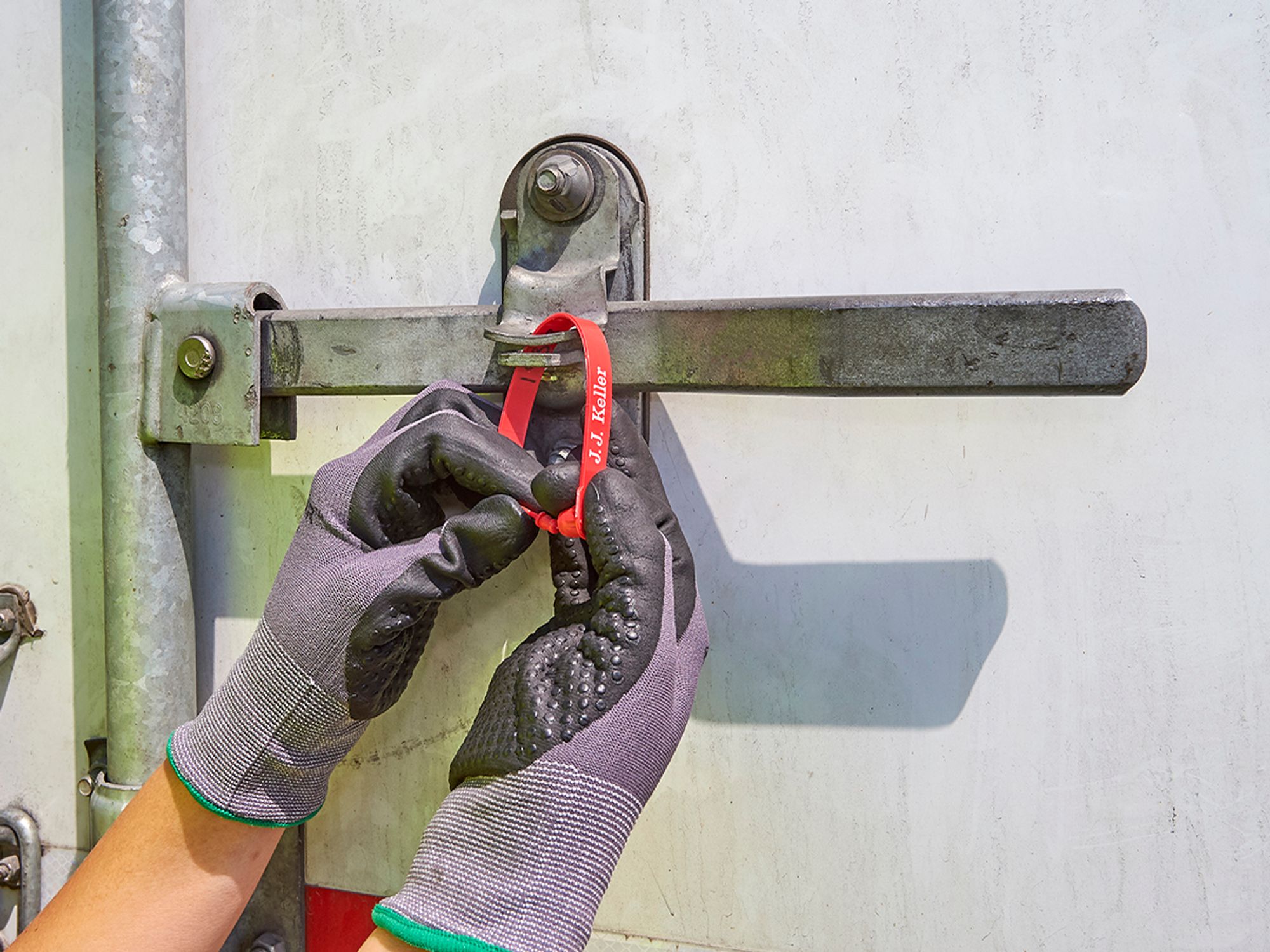Best practices for safe transportation of food

- Safety precautions mandated by shippers or carriers must be kept in mind by drivers hauling perishable food.
- A checklist of suggested practices at pick-up, enroute, at delivery, and for staged equipment can help prevent a rejected load.
- A broken cargo seal can cause an entire shipment to be rejected due to food safety concerns.
Commercial drivers who transport perishable food should be reminded of their company- and/or shipper-mandated safety precautions. A little vigilance may prevent a rejected load at the receiver. Consider the following suggested practices.
At pick-up:
- Know the correct shipping temperature for the product;
- Find out if the refrigeration unit should be in stop/start or continuous mode;
- Perform a pretrip inspection of the refrigeration unit, including these components:
- Belts
- Fluid levels (oil, coolant, and fuel)
- Signs of leakage
- Electrical connections
- Chute or duct condition
- Compartment door seals
- Test the refrigeration unit by making sure it starts and stays running, and the thermometer works;
- Before loading, precool the trailer to the temperature required by the shipper;
- Minimize loading time unless backed up to a cold storage dock; and
- For proper air flow, use spacers on the sidewalls and at the ends of the trailer, use pallets on the floor, and close trailer doors immediately after pulling away from the dock.
Enroute at each stop:
- Inspect the trailer’s exterior for damage or signs of tampering;
- Check for signs of leakage (fluids) or other problems with the refrigeration unit;
- Monitor the temperature function of the refrigeration unit, or at least once every three hours;
- Check the refrigeration unit’s fuel level;
- Keep in-transit time to a minimum to reduce opportunity for spoilage; and
- Record trailer temperatures at specific intervals either manually or through the temperature log on the refrigeration unit.
At delivery:
- Check and document overall condition of the product including damage, quality, and temperature;
- Record temperature readings on shipping papers including pulp or core temperature (i.e., inside of product), and trailer temperature; and
- Move product from loading docks into storage immediately.
Staged equipment (if managed by motor carrier):
- Clean the trailer interior regularly;
- Keep the box or trailer free of debris and dirt;
- Remove residues from previous cargo;
- Wash and sanitize load-securing devices and loading equipment, e.g., hand trucks and forklifts; and
- Make sure cleaning and sanitizing solutions do not create a contaminant.
Handling a broken trailer seal
When a driver delivers a load in good condition except for the seal not being intact, this often leads to the entire shipment being rejected. The Sanitary Transportation of Human and Animal Food (STHAF) rule will likely be cited as the reason, and food safety will be called into question.
The STHAF rule states that “[a] broken cargo seal or any evidence of food cargo tampering would not necessarily create a per se presumption of adulteration” and noted that broken seals are a food security concern. If a customer uses the STHAF rule as the basis for rejecting a load due to a broken seal, this is not correct. The driver should refer to the contract with the customer for disposition of the product in case of a broken seal.
